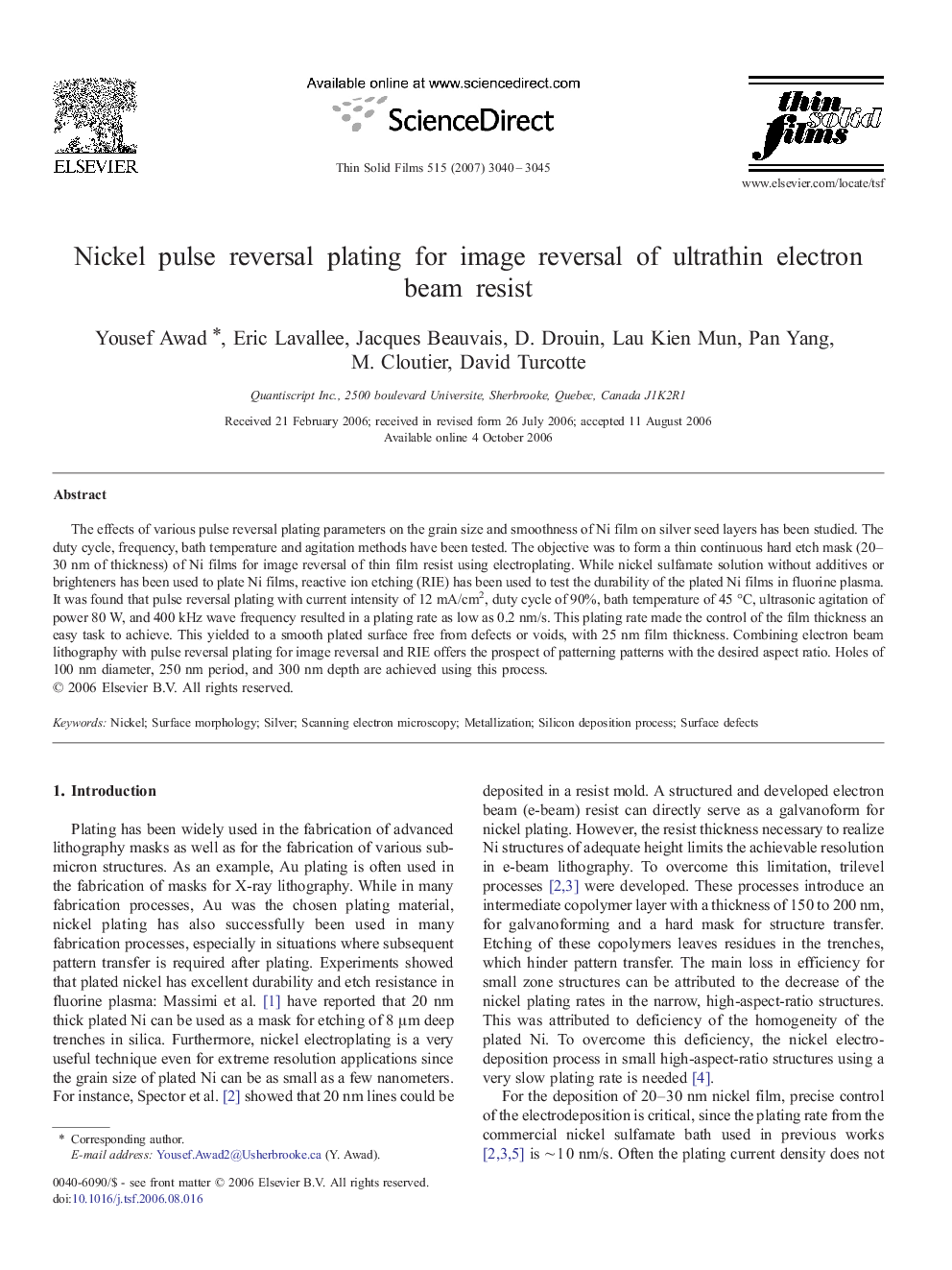| Article ID | Journal | Published Year | Pages | File Type |
|---|---|---|---|---|
| 1674719 | Thin Solid Films | 2007 | 6 Pages |
The effects of various pulse reversal plating parameters on the grain size and smoothness of Ni film on silver seed layers has been studied. The duty cycle, frequency, bath temperature and agitation methods have been tested. The objective was to form a thin continuous hard etch mask (20–30 nm of thickness) of Ni films for image reversal of thin film resist using electroplating. While nickel sulfamate solution without additives or brighteners has been used to plate Ni films, reactive ion etching (RIE) has been used to test the durability of the plated Ni films in fluorine plasma. It was found that pulse reversal plating with current intensity of 12 mA/cm2, duty cycle of 90%, bath temperature of 45 °C, ultrasonic agitation of power 80 W, and 400 kHz wave frequency resulted in a plating rate as low as 0.2 nm/s. This plating rate made the control of the film thickness an easy task to achieve. This yielded to a smooth plated surface free from defects or voids, with 25 nm film thickness. Combining electron beam lithography with pulse reversal plating for image reversal and RIE offers the prospect of patterning patterns with the desired aspect ratio. Holes of 100 nm diameter, 250 nm period, and 300 nm depth are achieved using this process.
